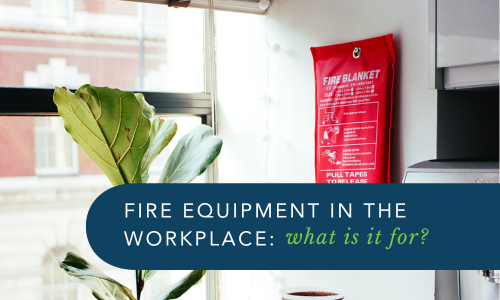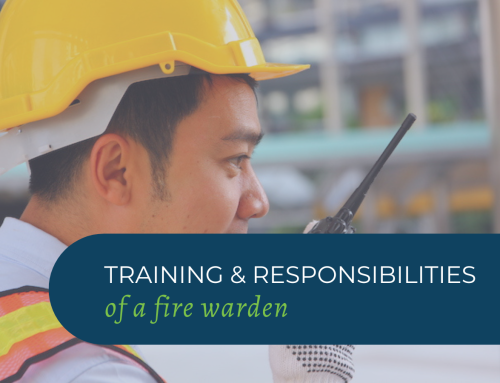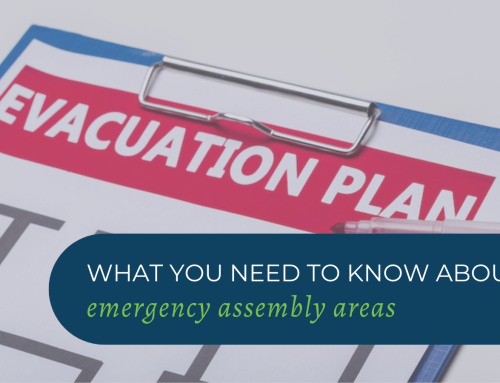In most work environment, job sites or offices, fire can pose a risk. Significant injury or loss of life and damage to property can occur should a fire break out. Knowing the workplace fire hazards is one thing but it should also come with the knowledge and skill to operate the available fire safety equipment.
Fire safety devices are specifically designed to control or combat the different types of fire. Below is a list Fire Safety Equipment that may be found and installed in workplaces:
Types of Fire Equipment:
Smoke Alarms/Detectors
This is a type of early warning device that detects heat/smoke quickly and sends out a loud sounding alarm which can be interlinked with multiple detectors, especially in a large area. This equipment maximizes any occupants or employee’s chance to respond to a fire breakout and escape the premises safely. The two main types of smoke alarms, are the ionization smoke alarm, which responds best to fast moving fires; and the photoelectric smoke alarm that operates with the use of a light source that reflects off minute smoke particles to sense smouldering fires. Smoke alarms can be either battery powered, or mains powered (this will depend on the type of building and when it was constructed and the specific regulations for that building. Mains powered smoke alarms will have batteries for back up in case of a power failure.
Fire Hose Reel
Usually mounted on walls, internal and/or external to the building, and maybe in Fire Hose cupboards. The fire hose can extend anywhere from 30-40 meters. Fire hose reels and fire hoses provides access to mains water supply, and only trained people should use them in the case of a developing fire. An untrained person can incur injuries in attempting to operate a fire hose. Fires that are fuelled by rubber, wood, paper, and non-conductive materials can be extinguished by using the fire hose.
Sprinklers
A selection of sprinklers can be used based on the design, installation, and maintenance of the sprinkler. Like a fire hose, this is connected to a mains water supply. The way it works is when the sprinkler head senses heat, it activates and releases the water onto the fire and activates an alarm. This way it wets any combustible materials in the area that could further ignite and therefore spread fire. Sprinkler systems are usually installed in large, multi-storey buildings, accommodations buildings and high fire hazard occupancies. Statistics show that in many cases where sprinklers are installed, the fire has been suppressed by the sprinkler system.
Fire Exit Signs
These signs are illuminated green and white signs which incorporate either the word EXIT, an arrow or maybe a ‘running man’, and they indicate the safest route out of the building to safety in the event of a fire. Exits signs are hard wired into the buildings power circuit and will have a battery back up in the event of a power outage.
Fire Blankets
Fire blankets are designed to smother fires that are fueled by cooking oils and fats. Usually found in kitchens where the risk of this type of fire is high. Constructed of a woven fire-resistant fiberglass material, fire blankets can withstand temperatures up to 500 degrees Celsius. Fire blankets also double as a protection over one’s self during a fire evacuation or to put over someone who’s clothing is on fire.
Fire Alarm System / Fire Indicator Panel
It is a fire control system that integrates and links different sensors, alarms, detectors, and manual call points. When any of the sensors detect any smoke, heat and/or fire the system activates sending an alert signal and activates the alarm. The Fire Indicator Panel displays the location of the detection/s and may enable the operator to communicate throughout the facility.
Fire Extinguisher
It is important to know that there is not one type of fire extinguisher that can be used on all types of fires. A fire extinguisher is a first attack firefighting tool for use in the early stages of a fire. It should only be used on a small fire and by someone who is confident and physically capable of using the extinguisher.
There are several different types of fire extinguishers available to suit the different types of fires:
- Carbon Dioxide (CO2) Extinguisher: Ideal for all electrically based fires. Can be used on solid material and combustible liquid types of fires with less effectiveness.
- Foam Fire Extinguisher: Smothers a fire using a thick foam solution to cover the fuel and remove oxygen.
- Wet Chemical Extinguisher: Will cool burning oils and smother the fire of oxygen.
- Water Fire Extinguisher: Used on Class A, solid material type fires. Not an effective extinguisher on other types of fires.
- Water Additive Fire Extinguisher: Contains a chemical surfactant making the water more effective. It is also a lighter option where manual handling restrictions apply.
- Dry Powder Fire Extinguisher: Can combat most fires which involve wood, paper, flammable liquids, and electricity. Powder Fire extinguishers can also be used on vehicle fires and can be stored in cars or commercial vehicles.
All the fire safety equipment mentioned requires inspection and testing in accordance with Australian Standards.
Equipment testing is conducted to ensure a device is operational in the event of an emergency. During this testing Emergency Management Professionals will check for leaks, free from dust and debris; and that it is operating to its full capacity. A dated record must be kept of the latest testing results and maintenance until the next test is conducted.
Workplace Emergency Management can assist you with improving safety in your workplace. We can supply, install, test, and monitor your fire equipment. Along with this, we offer Nationally Recognised Courses as well as other training sessions to equip any employer and staff with relevant and compliant preparation for any workplace fire risks.
Our very friendly staff is available for a chat at 02-888-1694 should you need further information on the services we provide. Alternatively, get in touch via the website to have all your questions answered.
GET IN TOUCH
Are you ready for peace of mind that your workforce is as safe and prepared as possible?
With a dedicated team of staff ready to help you meet compliance requirements and improve the overall safety of your workplace, all you need to do is get in touch.
Request your free audit today!



